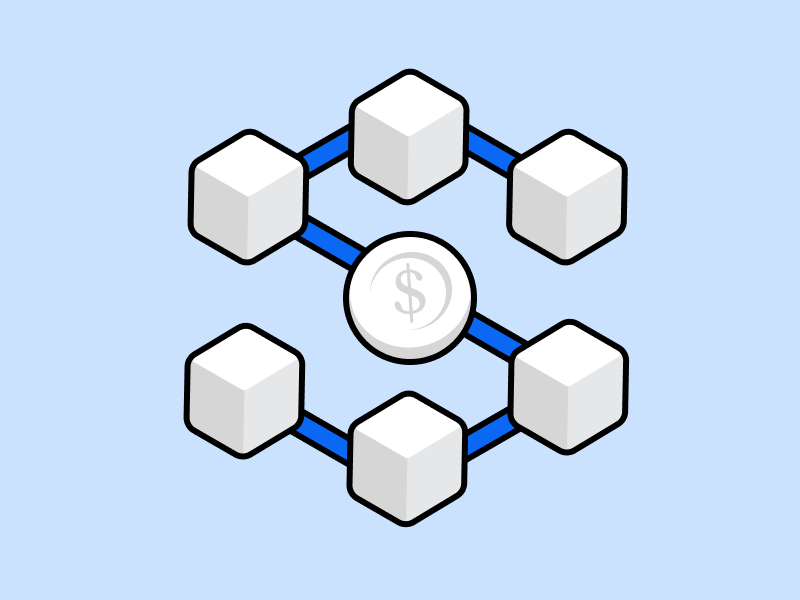Understanding the Differences Between ERC-1155 and ERC-721
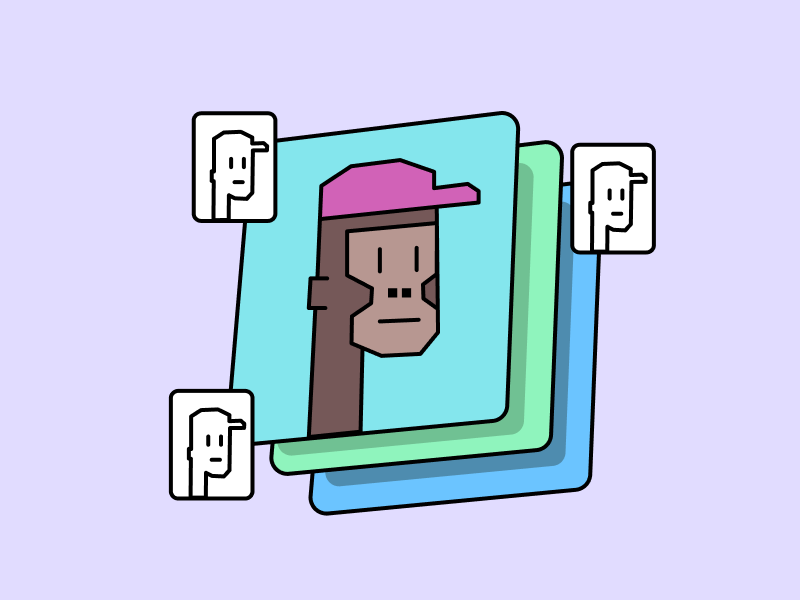
ERC is an essential element within the Ethereum ecosystem, playing a crucial role in the development of the cryptocurrency industry. ERC is not a single product, but rather a set of standards that includes ERC-20, ERC-721, ERC-1155, and others. So, what is ERC? What are its uses and roles in the crypto ecosystem? Check out the full explanation in the following article.
Article Summary
- 📝 Ethereum Request for Comments (ERC) is a technical proposal to introduce new improvements or features to the Ethereum network.
- 🖼️ ERC-721 is an Ethereum token standard used for Non-Fungible Tokens (NFT), with unique attributes and characteristics that cannot replace another.
- ⚙️ ERC-1155 is an Ethereum token standard used for multi-token minting and transaction management. It supports the development of fungible tokens (ERC-20) and NFT (ERC-721) in one smart contract.
- 👁️ As the latest version, ERC-1155 has better efficiency, flexibility, and security features than ERC-721.
What is an ERC?
Before discussing ERC-721 and ERC-1155, we must first know what ERC is. ERC, Ethereum Request for Comments, is a technical proposal to introduce new improvements or features to the Ethereum network submitted by developers. Then, the number behind the ERC is the number of the proposal.
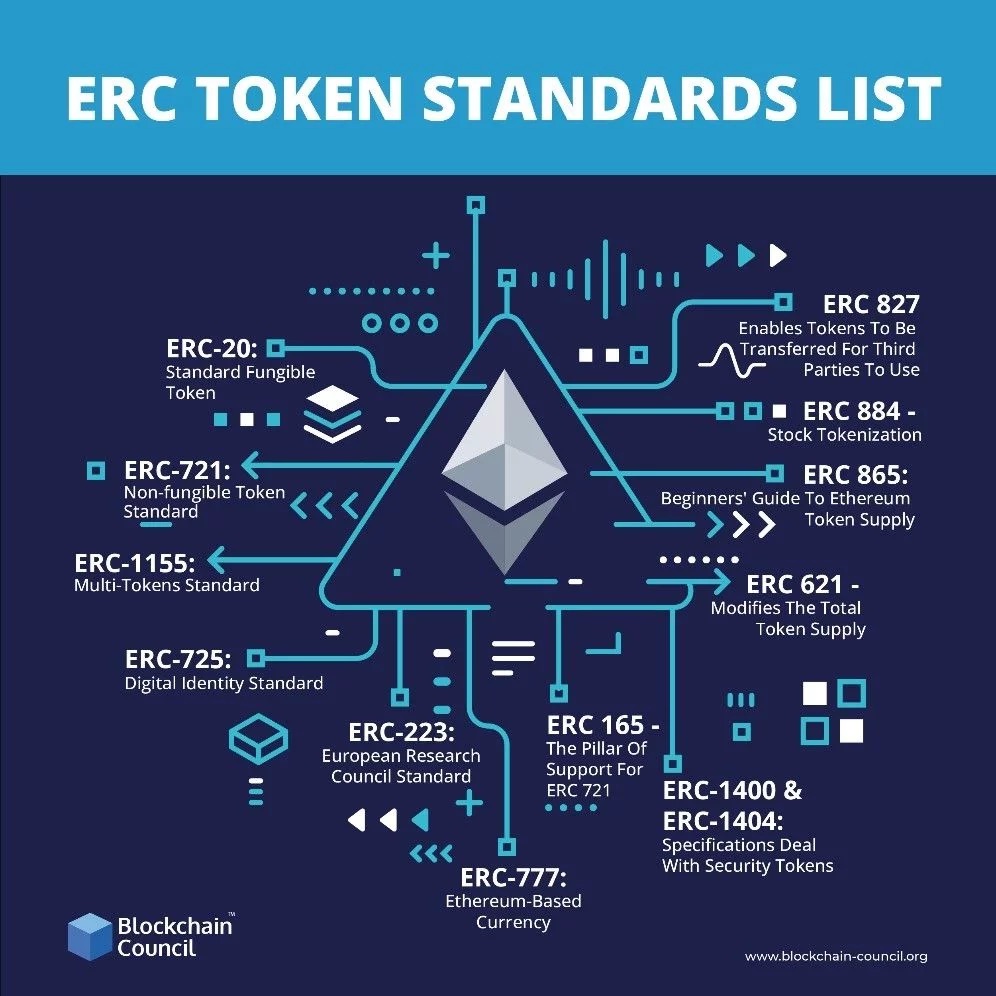
New ERCs are created by submitting their proposals through the Ethereum Improvement Proposal (EIP). After that, each proposed ERC will be discussed by the Ethereum community through Ethereum Github. The new ERC will be implemented when the Ethereum core development team and the community have approved it. Each ERC standard defines the rules and specifications for various functions and smart contracts in the Ethereum ecosystem.
One of the most crucial ERCs is ERC-20. It is the technical standard for creating and using tokens on the Ethereum blockchain. ERC-20 allows developers to develop tokenized applications that can exchange information with other products and services in the Ethereum ecosystem.
If Ethereum has EIP, Bitcoin has BIP. Learn more about BIP and its uses here.
What is an ERC-721?
So what is ERC-721? ERC-721 is an Ethereum token standard used for Non-Fungible Tokens (NFT), with unique attributes and characteristics that set it apart from other tokens. This makes each ERC-721 token a one-of-a-kind token and cannot be substituted or directly exchanged for another. That is why ERC-721 is also referred to as an NFT token.
Besides being unique and non-replaceable, ERC-721 also sends NFTs between accounts and makes NFTs tradable with other crypto assets. It can also be used to identify the total supply of NFTs on the network and allow it to be used as a tool to query who owns a particular asset.
Before the existence of ERC-721, most tokens only served as currency or a place to store value like gold, for example. However,
ERC-721 made it easy to create cryptographically unique tokens that could be linked to unique content, from artwork, music, and sneakers. That’s why ERC-721 has become one of the pillars of the Ethereum ecosystem, as it forms the backbone of the current NFT landscape.
Discover the fascinating world of NFTs and how it works in the following article.
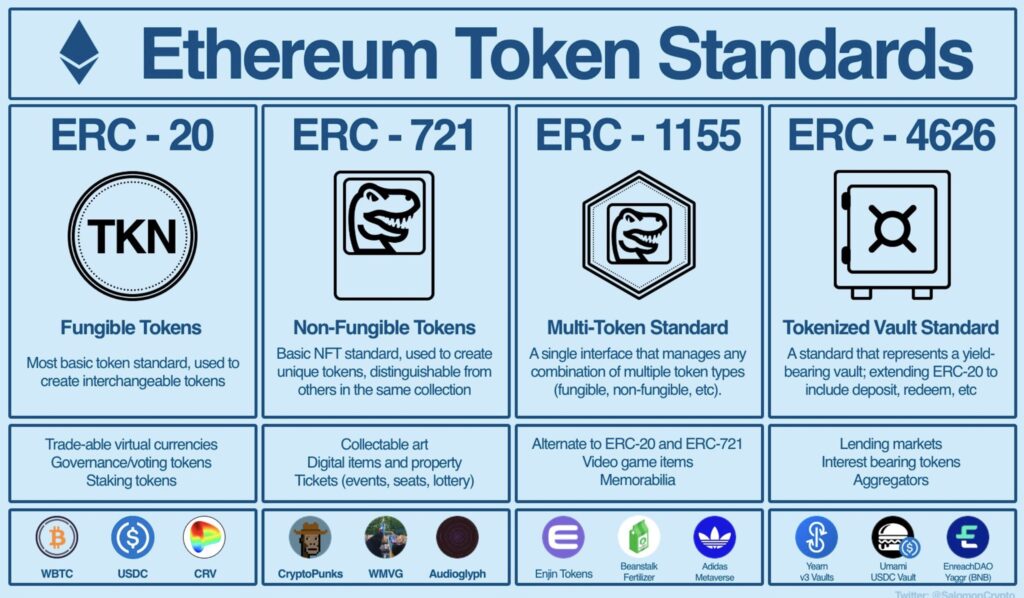
What is an ERC-1155?
ERC-1155 was first proposed by Enjin’s CTO, Witek Radomski, through an EIP proposal back in 2018. The initial idea behind the proposal arose from concerns about the limited capabilities of ERC-721 and efforts to reduce transaction volume. ERC-1155 was then created with the capability to mint and transfer multiple tokens at once, making NFT transactions more efficient.
ERC-1155 inevitably offers more flexibility compared to ERC-721. This is because ERC-1155 combines the functions of ERC-20 and ERC-721. By combining these features, ERC-1155 allows users to create FT or fungible tokens (ERC-20) and NFT (ERC-721) in one smart contract. This means that through ERC-1155, users can easily create new items without issuing a new smart contract.
Then, in terms of security, ERC-1155 also has security features that can verify the validity of transactions. So, when a transaction fails, the token can return to the sender’s address. This feature makes users no longer worry about sending tokens to the wrong address. No wonder ERC-1155 is considered a game changer thanks to these various advantages. Because ERC-1155 can have the functions of ERC-20 and ERC-721, making it more efficient while fixing the problems that both have.
The Difference Between ERC-721 and ERC-1155
Of course, ERC-1155 being the latest version, makes it have several advantages over ERC-721. Even so, each ERC still has its role and use. Here are some of the differences between ERC-721 and ERC-1155.
- 🪙 Token type. ERC-721 is unique and cannot be replaced with other tokens, making it only support NFT tokens. In contrast, ERC-1155 can create both NFT and FT tokens.
- 📄 Smart contracts. Since ERC-721 only supports one token type, a unique smart contract is required for each token. Whereas ERC-1155 can use one smart contract for various tokens and new items.
- ⚡ Batch Transfer. ERC-721 only supports delivering one type of token in a single transaction. Making it inefficient and potentially costing more in gas fees. On the one hand, ERC-1155 supports sending in batches, sending or receiving many tokens in one transaction. It practically makes ERC-1155 more efficient and can reduce gas fees.
- 🔒 Asset Security. Transactions on ERC-721 are irreversible. So, if a user sends to the wrong address, the asset will be lost and cannot be retrieved. While ERC-1155 has a “safe transfer” function that allows for a verification process of the transaction’s validity. The asset can still be retrieved even if sent to the wrong address.
ERC-721 Implementation in the Crypto Industry
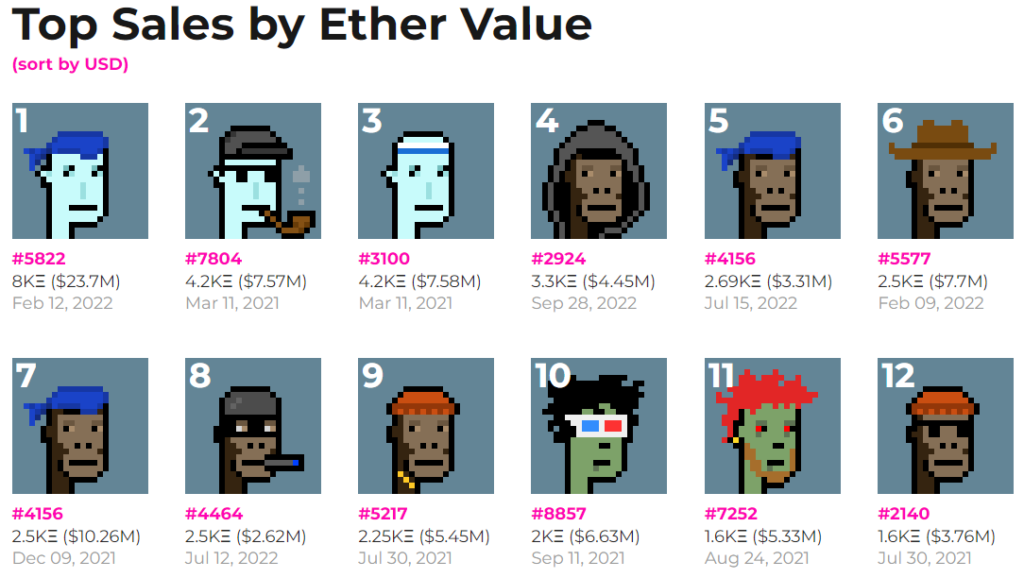
The following are some of the projects that use ERC-271:
- Decentraland. Decentraland is a virtual gaming platform where users can own and build virtual land. Land in Decentraland is represented as ERC-721 tokens, which ensures that each plot of land is unique and owned exclusively by the token holder
- CryptoPunks. CryptoPunks is one of the earliest and most popular NFT projects. Consisting of 10,000 unique pixel art characters, each punk is an ERC-721 token that can be bought, sold, and held as a collectible.
- Gods Unchained. Gods Unchained is a strategic trading card game where each card is an ERC-721 token. This ensures that each card is unique and can be sold or exchanged on the secondary market.
Gods Unchained is a game built on the Immutable X network. Learn more about Immutable X in the following article.
ERC-1155 Implementation in the Crypto Industry
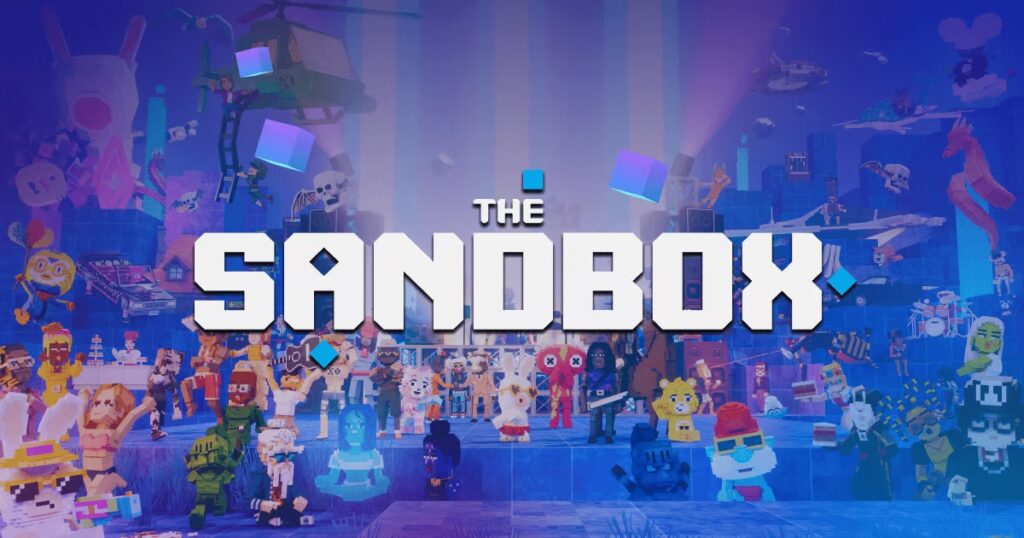
The following are some of the projects that use ERC-1151:
- Enjin Platform. Enjin is a blockchain-based gaming platform that uses ERC-1155 to create game assets that can be used across games. With ERC-1155, Enjin can create different assets in one smart contract, such as weapons, shields, and other items.
- The Sandbox. The Sandbox is a virtual gaming platform where users can build, own, and monetize their experiences in a virtual world. ERC-1155 is used to create and manage in-game assets, such as land, buildings, and equipment.
- Rarible. Rarible is a platform that allows users to create and sell digital artwork as NFTs. Rarible uses ERC-1155 to support both FTs and NFTs, which allows for more flexibility in the types of artwork that can be created and traded.
Also read: not only Rarible, popular NFT platforms used by NFT enthusiasts are Opensea Pro and Blur.
Conclusion
Currently, both ERC-721 and ERC-1155 have their uses. Both also play an important role in the Ethereum ecosystem. ERC-721 is still a valid standard token for NFT assets. In comparison, ERC-1155 brings better efficiency, flexibility, and security than ERC-721.
Ultimately, the product type and needs determine the use of the standard token. If the need is only for creating individual NFTs and FTs with a simple level of usability, ERC-721 is the more appropriate choice. However, if the need is for a flexible token with a wide range of uses and a good efficiency level, then ERC-11 is a better choice.
Buy Crypto Aset Crypto in Pintu
Looking to invest in crypto assets? No worries, you can safely and conveniently purchase a wide range of cryptocurrencies such as BTC, ETH, SOL, and others safely and easily at Pintu. Pintu diligently evaluates all its crypto assets, highlighting the significance of being cautious.
Pintu is also compatible with popular wallets such as Metamask to facilitate your transactions. Download Pintu app on Play Store and App Store! Your security is guaranteed because Pintu is regulated and supervised by Bappebti and Kominfo.
Aside from buying and trading crypto assets, you can expand your knowledge about cryptocurrencies through various Pintu Academy articles. Updated weekly, all Pintu Academy articles are made for knowledge and educational purposes, not as financial advice.
Reference
Ethereum Docs, ERC-721 Non-Fungible Token Standards, accessed on 30 May 2023.
Ethereum Docs, ERC-1155 Multi-Token Standards, accessed on 30 May 2023.
Ayushi Abrol, ERC Token Standards- The Ultimate List, Blockchain Council, accessed on 30 May 2023.
Alchemy Team, Your Guide to ERC-1155: Comparing ERC-721 to ERC-1155, Alchemy, accessed on 30 May 2023.
Supra Oracles, ERC-721 vs. ERC-1155 NFTs: What’s The Difference? accessed on 31 May 2023.
Share

